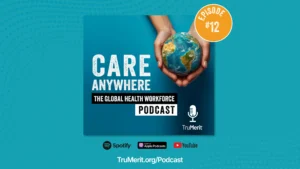The Healthcare Workforce Shortage Persists. Experts Say the True Solution is Improved, Well-Funded Schooling
Thanks to pandemic-induced burnout, an aging population placing more demand on the nation’s healthcare system, and a gap between billions in federal funding and improvements to the healthcare labor supply, the United States is witnessing a persisting healthcare workforce shortage.
The shortage of physicians is expected to reach alarming levels by 2034 (perhaps as high as 124,000, according to one study). And a growing shortage of nurses will make this problem worse; according to estimates, we can only address this shortage by adding 1.2 million registered nurses to the workforce by 2030.
What’s both encouraging and disappointing is that the lack of trained, healthcare personnel isn’t due to a lack of interest; the healthcare training ecosystem can create some self-inflicted wounds. It’s not news that there are only a limited number of slots at nursing schools, but in 2021, as many as 92,000 qualified students were rejected from nursing schools due to a shortage of faculty and training sites.
While hospital systems are trying a variety of strategies to counteract the healthcare workforce shortage, short-term solutions that are community-specific can clearly only go so far, considering the shortage has persisted as long as it has. Roy Bejarano, CEO of Scale Healthcare, which partners with management teams across the country to improve management performance in the healthcare industry, highlights the importance of examining — and improving — the medical and nursing school system in order to deal with this persisting shortage of healthcare workers.
Roy’s Thoughts:
“Unfortunately, emergency short-term staffing solutions are often unsustainable, highly expensive transitory relationships. Hospitals would prefer stable workforces that buy into culture and quality, dependable staff that go above and beyond because they’re emotionally invested in the institution. We run the risk of too much volatility affecting care and patient outcomes. Shortages in any area, either administrative or clinical, create pressure on those that remain, those staff members that remain, and it can become a vicious cycle all the way down, as retention becomes more difficult and as turnover increases. The good news: the problems listed in the question don’t all actually historically lead to staff shortages. Some actually are associated with increased supply of staff. A recession, per se, should create more labor supply and lower the costs of labor, as existing workers unfortunately lose their positions and look for new employment. Healthcare is, historically, a defensive industry and it typically offers employment where other industries slow down.
A good comparison would be the tech space, venture capital, which right now, is looking at the depression. A shrinking workforce is therefore transitory. Workforces, and workforce participation goes up. 64-65% of the populace goes down 62-61%. It’s not permanent — at least historically it hasn’t been. Change and stress forces hospitals to reexamine everything that they do to find better solutions. A plan B, contingency plans for hiring, invest more in what they have, their loyal staff, their retention. It’s not there for all bad news. There are silver linings to every crisis, and these health systems will come back. Those that survive [will] come back stronger for it. A more important question that we should ask ourselves, is what can we do that is structurally different to get a different labor shortage outcome in healthcare the next time around? What’s going on with this recurring theme of insufficient supply in healthcare? And I think for that, we all need to take a closer look at our schooling system. How many schools do we have? How well funded are they? What’s their commitment to producing higher quantities of qualified clinicians? Why is the industry seemingly so excited to restrict supply?
A cynic might point to higher compensation levels for those that are there today. But what benefits one might not benefit all. Shorter training periods, other ways of allocating clinical tasks more efficiently, introducing mid-levels allowing for nurse practitioners to be more available to do more tasks versus less, less reliance on this small pocket of super well-trained, very short supply clinicians, would be probably a step in the right direction, but all of these changes take time and require a lot of analysis and collaboration.”
Article written by Aarushi Maheshwari.









